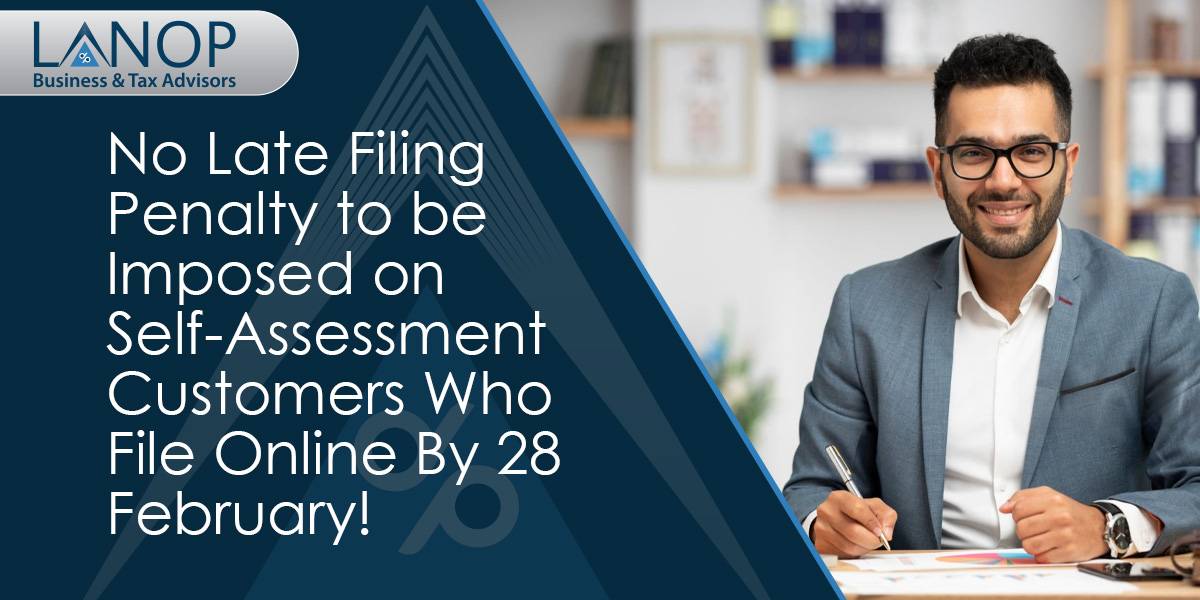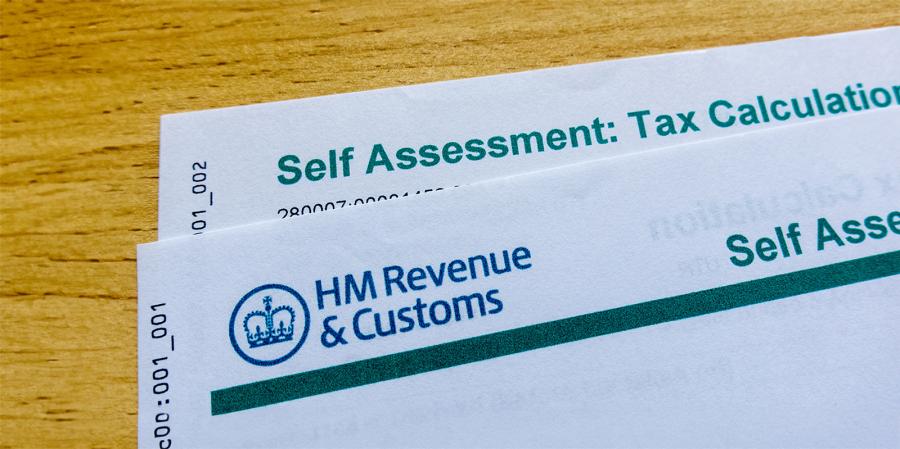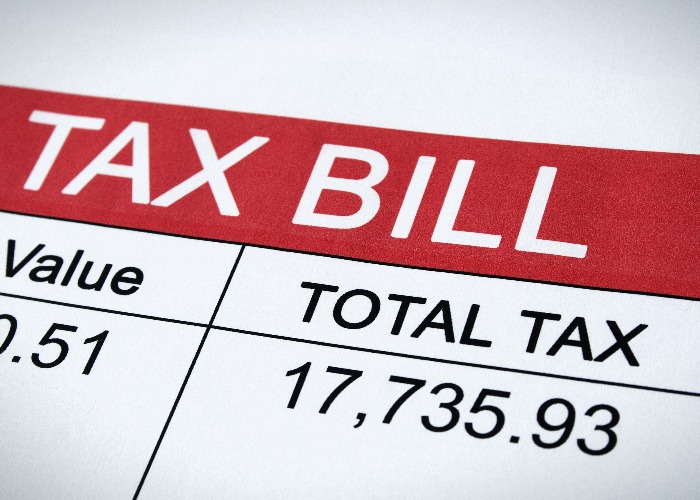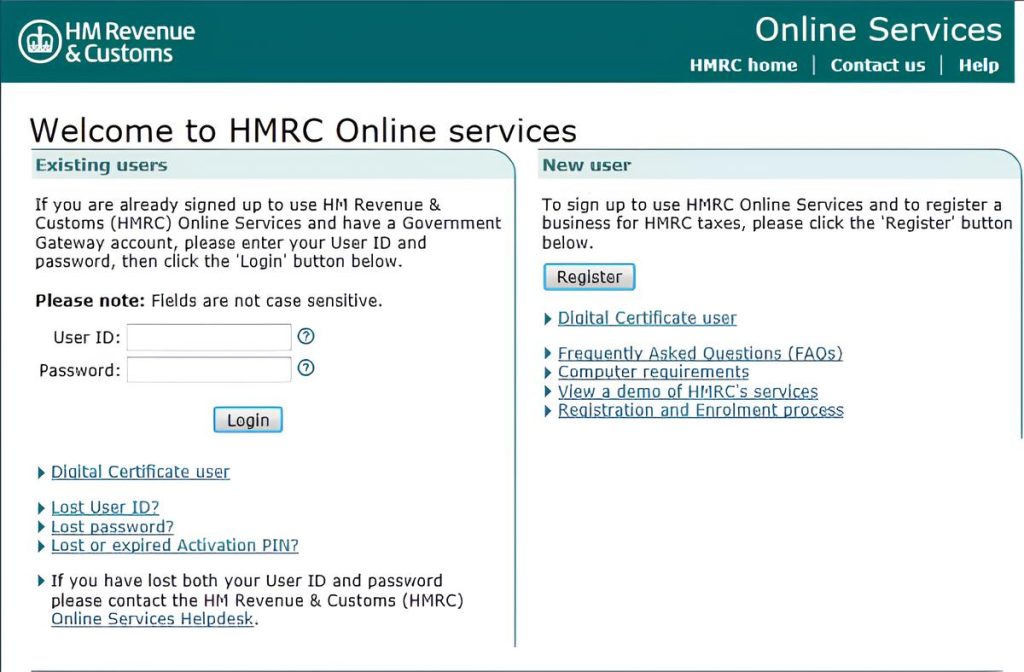
In recognition of the unique and exceptional challenges posed by the pandemic, HM Revenue & Customs (HMRC) demonstrated operational flexibility to assist millions of UK taxpayers struggling to meet their statutory obligations. Specifically, the HMRC Chief Executive, Jim Harra, announced a crucial concession for Self-Assessment customers. This decision acknowledged that many people were facing extraordinary pressures that made compliance with the traditional timeline extremely difficult.
The core feature of this relief was the waiving of the initial late filing penalty. HMRC stipulated that no late filing penalty would be imposed on customers who submitted their online tax return after the statutory deadline, provided that the return was filed by the deferred date of 28 February 2021. This last-minute adjustment was a significant development, estimated to benefit more than three million people who had yet to file their returns during the crisis. The intent behind this extension was clear: to grant taxpayers the necessary “breathing space” required to complete and submit their documentation without the immediate concern of administrative sanctions.
While the filing deadline was extended, it is paramount for sole traders and small business owners to understand a critical distinction in UK taxation: the concession applied only to the administrative filing requirement, not the financial payment obligation. The deadline for settling the Self-Assessment tax bill remained firmly set at 31 January.
HMRC continued to encourage all customers to file and pay as early as possible, ideally by the original 31 January date. This unwavering commitment to the payment deadline underscores a core principle of HMRC policy: administrative penalties for filing can be mitigated under exceptional circumstances, but the underlying tax liabilities are considered due on the statutory date. This ensures immediate revenue collection remains prioritized over the enforcement of administrative sanctions.
The immediate consequence of failing to pay by the statutory date was the automatic imposition of interest charges. Interest on any outstanding tax liabilities began accruing automatically from 1 February 2021. This late payment interest is rarely waived, irrespective of the difficulties experienced by the taxpayer. Therefore, even if a taxpayer benefited from the filing extension to 28 February, they were still liable for at least 28 days of interest if payment was not made by 31 January. This recurring mechanism highlights the necessity for meticulous financial planning to protect against unnecessary future costs.

The Fastest and Most Recommended Payment Options
For taxpayers making payments close to the deadline, digital solutions offering same or next-day clearance are strongly recommended to mitigate the risk of triggering interest charges from 1 February.| Payment Method | Processing Time (Working Days) | Recommended Usage | Risk Level Near 31 Jan |
| Faster Payments (Online Banking) | Same or Next Day | Recommended for deadline payments | Low |
| Debit/Corporate Credit Card Online | Same or Next Day | Highly reliable digital option | Low |
| CHAPS | Same Working Day | High-value, urgent payments | Low |
| Bacs | 3 Working Days | Standard bank transfer, requires planning | High |
| Cheque (Post) | 3 Working Days (after receipt) | Avoid if payment is urgent | High |

For UK taxpayers, including sole traders and small business owners, facing genuine, temporary financial difficulty and unable to settle their full Self-Assessment tax bill by the 31 January deadline, HMRC provides the Time to Pay arrangement. This mechanism acts as a vital lifeline, allowing the taxpayer to spread their outstanding tax debt over a manageable period, typically up to 12 months.
Although TTP arrangements provide crucial flexibility and prevent the immediate escalation of debt collection measures, two key facts must be understood: firstly, the taxpayer must still have filed their return; and secondly, interest will continue to be charged on the outstanding tax debt for the entire duration of the payment plan, starting from 1 February.
The availability of a TTP arrangement is contingent upon the taxpayer first fulfilling their primary statutory duty: filing. A critical precondition for setting up any TTP arrangement is that the customer must have successfully filed their 2019 to 2020 tax return (or the return for the relevant tax year) before attempting to establish the payment plan. HMRC views TTP as a solution to the payment problem, and compliance with the filing requirement is non-negotiable before payment terms can be negotiated.
HMRC offers two distinct routes for establishing a TTP arrangement, depending on the complexity and size of the tax debt.
The Online Service for Automated Arrangements
For most Self-Assessment cases, HMRC provides a straightforward, automated online application service. This route is available only if the taxpayer meets specific, strict eligibility criteria:
This automated process is efficient for many small business owners whose tax debt falls within these standard parameters.
Customers who do not meet the criteria for the automated online service must contact HMRC directly by phone. The designated helpline for discussing TTP is 0300 200 3822. Direct negotiation is mandatory if:
The distinction between the automated threshold and the required human negotiation defines the point where standard compliance moves into complex financial restructuring. For debts exceeding £30,000 or requiring terms longer than 12 months, scenarios often faced by larger small business owners or those in acute financial distress professional intervention is highly recommended. HMRC requires a detailed demonstration of the taxpayer’s ability to service the debt and maintain ongoing compliance. Experienced chartered accountants can act as crucial intermediaries, presenting a robust financial case that increases the likelihood of securing the required terms, sometimes extending the repayment period beyond the typical 12-month limit in specific turnaround or insolvency scenarios.

The Self-Assessment system operates on a “pay as you go” basis, primarily through Payments on Account (POA). POA are advance payments made by taxpayers towards their estimated tax liability for the current tax year. This system is designed to distribute the tax burden across the year, rather than requiring a single, large payment.
A typical year’s liability is divided into two equal instalments of POA, each representing half of the previous year’s total tax liability. These payments are due by midnight on two crucial dates: 31 January and 31 July.
Taxpayers who anticipate a reduction in their taxable income for the current year are entitled to apply to HMRC to reduce their POA. This option was particularly relevant during the period in question due to widespread loss of earnings during COVID-19, which significantly impacted on the profitability of many sole traders and small business owners.
Reducing POA prevents the taxpayer from overpaying tax throughout the year, thereby providing essential relief and safeguarding crucial cash flow. By accurately forecasting a lower tax bill, the taxpayer can maintain better financial liquidity until the final balancing payment is due.
Taxpayers can request a reduction in their Payments on Account either through the HMRC online services or by traditional post.
Procedure for Reduction
The most efficient approach is to utilize the online system via the Government Gateway:
Alternatively, customers can complete and submit Form SA303 by post to their respective tax office.
While reducing POA provides cash flow relief, it is not a decision to be taken lightly. The freedom to reduce the payments is strictly conditional upon the taxpayer making a reasonably accurate estimate of their future income.
If a taxpayer reduces their POA too much and their final tax bill ultimately proves to be higher than the revised estimate, HMRC will charge interest on the difference between the reduced amount paid and the amount that should have been paid. This interest is calculated retrospectively from the original due dates of the POA instalments (31 January and 31 July). In severe cases of excessive reduction without genuine justification, HMRC reserves the right to impose financial penalties.
This exposure to retrospective interest charges highlights the absolute necessity of accurate financial forecasting. Relying on the professional expertise of chartered accountants to calculate the projected tax liability before requesting a reduction ensures that the taxpayer minimizes the risk of incurring unexpected future costs from HMRC.
For self-employed individuals and sole traders, the payment of National Insurance contributions (NICs) is intrinsically linked to eligibility for certain forms of state support. These are known as contributory benefits, which include fundamental components of the UK social safety net such as the State Pension, Maternity Allowance, and New Style Employment and Support Allowance (ESA).
The specific contributions relevant here are the Class 2 National Insurance contributions (NICs). These are typically calculated and paid alongside Income Tax and Class 4 NICs through the Self-Assessment system. Maintaining a continuous, up-to-date National Insurance record by ensuring these Class 2 NICs are paid on time is vital for establishing entitlement to these benefits.
The administrative timing of payments creates a unique vulnerability for self-employed individuals who need to claim a contributory benefit soon after the 31 January deadline. Self-Assessment customers in this situation must ensure their annual Class 2 National Insurance contributions are paid by 31 January 2021 to guarantee that their claims are unaffected.
The risk arises when a taxpayer cannot pay their full Self-Assessment liabilities (tax debt) by the deadline and opts to enter a Time to Pay arrangement. Because the Class 2 NICs are typically included within the overall balancing payment due on 31 January, deferring that payment through a TTP plan even if the taxpayer makes regular instalments can defer the date on which those Class 2 NICs are officially credited to the National Insurance record.
A delay in the credit of Class 2 National Insurance can be critically detrimental for time-sensitive applications, such as for Maternity Allowance. If the benefit claim is submitted before the delayed NICs are officially recorded as paid, the claim may fail or be reduced, even though the taxpayer is actively working toward clearing their tax debt with HMRC.
This critical compliance intersection requires proactive management. The explicit instruction for taxpayers is to prioritize settling the portion of their tax liability specifically covering the Class 2 NICs by 31 January, even if the remaining Income Tax portion is subject to a TTP plan. This strategy ensures that the essential National Insurance record is protected, guaranteeing immediate access to contributory benefits should the need arise. Although HMRC typically takes steps to identify and contact customers affected by this issue, relying on this retrospective process carries unnecessary risk for critical welfare provisions.
HMRC maintains a robust array of communication channels designed to support UK taxpayers with their queries relating to Self-Assessment and UK taxation. These channels include the dedicated Self-Assessment phone helpline, digital support via webchat, and interactive platforms such as Twitter (by directing posts to @HMRCcustomers). Furthermore, customers can efficiently access personalized information, track payments, and manage various aspects of their tax affairs through their Personal Tax Account or the free HMRC app.
Standard operating hours for the main Self-Assessment phone helpline are generally weekdays, typically running from 8 am to 6 pm, with webchat services sometimes offering slightly longer availability. However, during critical peak filing periods, such as the final days leading up to the 31 January deadline, HMRC significantly extends its services to handle increased demand.
During the critical period leading up to the 2021 filing deadline, for instance, HMRC extended opening hours for both phone helplines and webchat services across the final weekend of 30th and 31st January. The specific weekend timings reflected this extended commitment:
These temporary extensions illustrate HMRC’s commitment to providing maximum accessibility to taxpayers during high-pressure compliance windows.
To safeguard sensitive personal financial data against identity fraud and ensure the integrity of the system, HMRC enforces strict identity verification protocols before granting access to its online services or the Personal Tax Account.
Taxpayers must be ready to verify their identity using multiple, independent sources of information. This requirement for at least two sources of information ensures robust security and reflects the sensitive nature of the information held within the system.
The types of documents and data points generally required for verification include:
The extensive nature of these security requirements demonstrates the high level of Trustworthiness and control necessary for managing personal financial information within the UK taxation framework. Preparation is key; taxpayers must have these documents readily available to prevent being locked out of their accounts during crucial filing or payment deadlines.
Category | Source Example | Minimum Required | Purpose |
Primary Identification | UK Passport (or driving license) | At least two sources required | Proving personal identity |
Employment/Earnings | P60/payslip | At least two sources required | Validating employment history |
Financial History | Credit Reference Agency Data | At least two sources required | Verifying financial footprint |
Existing HMRC Relationship | Tax credits correspondence | At least two sources required | Confirming prior tax interactions |

The Value of Expert Advisory Services in Complex Compliance
The administrative flexibility demonstrated by HMRC during periods of crisis, while welcomed, introduces layers of complexity, particularly when navigating the fine print regarding interest charges from 1 February, the rigid prerequisites for Time to Pay arrangements, and the delicate link between delayed payments and Class 2 National Insurance credit for contributory benefits.
For small business owners and sole traders, the compliance landscape requires more than simply meeting deadlines; it demands strategic planning, precise forecasting, and expert negotiation. Accurately assessing the justification for reducing Payments on Account, mitigating the risk of retrospective HMRC interest charges, and ensuring robust representations during potential HMRC Tax Investigations requires the specialized knowledge of highly experienced chartered accountants.
Lanop Chartered Accountants and Tax Advisors are dedicated to providing comprehensive financial solutions and expert guidance across all facets of UK taxation and compliance. As experienced chartered accountants and trusted business advisors, the firm focuses on building long-term relationships founded on reliability and high standards of professionalism.
The firm maintains extensive knowledge in modern cloud accounting platforms, including XERO Accounting, providing clients with seamless technical guidance and support for their day-to-day financial operations.
The HMRC late-filing penalty waiver was introduced to support UK taxpayers affected by the pandemic. It allowed individuals extra time to submit their Self-Assessment tax return without facing the usual £100 penalty, if they filed online by 28 February 2021. The measure acknowledged the financial and logistical pressures faced by self-employed professionals and small businesses, giving them breathing space to stay compliant while managing their cash flow more effectively.
No, the HMRC deadline extension applied only to the filing of Self-Assessment returns, not to tax payments. The actual payment deadline remained 31 January 2021, and any unpaid tax began accruing interest from 1 February. Even if the return was submitted by the extended date, interest on outstanding amounts still applied. Taxpayers were therefore encouraged to pay their Self-Assessment tax bill on time to avoid unnecessary costs.
The best way to avoid penalties is to plan ahead. Keep accurate digital records using XERO Accounting or similar tools, set aside funds for your Self-Assessment tax bill, and submit early. Partnering with professionals such as Lanop Chartered Accountants and Tax Advisors can make a big difference. Their team helps you calculate liabilities correctly, manage cash flow, and ensure compliance with HMRC requirements before deadlines, protecting you from late-payment interest or filing penalties.
If you cannot pay your Self-Assessment tax bill, HMRC may allow you to set up a Time to Pay arrangement. This lets you spread your balance over several months, usually up to 12. Interest still applies, but it prevents harsher debt recovery actions. For larger bills or complex cases, it’s best to seek help from Lanop Accountants, who can liaise directly with HMRC and negotiate manageable terms that protect your business finances.
Yes, it can. Reducing Payments on Account can help if your income drops significantly, but underestimating your earnings could lead to HMRC interest charges later. Before requesting a reduction, review your figures carefully or consult experts such as Lanop Chartered Accountants, who can forecast your income and advise on the safest adjustment. Getting this right avoids future underpayment penalties while keeping your cash flow balanced during uncertain periods.
Handling Self-Assessment tax returns can be time-consuming and stressful, especially with frequent updates from HMRC. Working with Lanop Business and Tax Advisors gives you professional support from experts who understand UK tax law, digital accounting software, and submission requirements. They help ensure your returns are accurate, filed on time, and compliant. Beyond filing, Lanop provides strategic advice to reduce tax liabilities, manage cash flow, and strengthen your financial planning year-round.
Aurangzaib Chawla is a UK-based tax advisor and Managing Partner at Lanop Business & Tax Advisors. With nearly two decades of experience, he supports individuals, landlords, and SMEs with proactive tax planning and compliance. Known for simplifying complex tax legislation, Zaib helps clients minimise liabilities while building sustainable, tax-efficient strategies for long-term success.
let’s talk through your options, no jargon, no pressure.
To learn more about how we can help you grow your business, contact us today:
Monday to Friday 9am – 6pm

At Lanop, I am providing my services as the Managing Partner and Tax Specialist. My expertise includes helping medium and small-scale businesses in their accountancy and legal requirements, business start-up support, strategic review, payroll system review and implementation, VAT and tax compliance to cloud accounting. I am also an expert in financial reporting, identifying and monitoring risks, strategic business development, client retention, market acquisition and deals closure by carefully planning my sales cycle.
Enter Your Name & Email Address for a Free Consultation